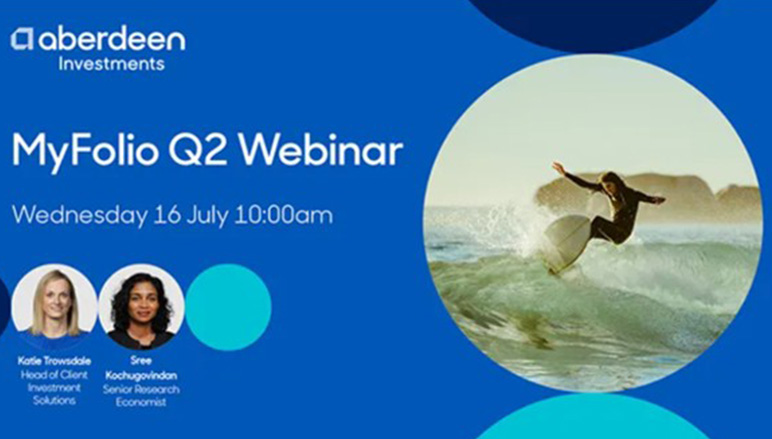Another world
In addition to the protection information provided by insurers, says Kevin Carr, chief executive of Protection Review, there is another world of supplementary data. Here is his run-down of 10 unlikely protection sales aids
Insurers provide a wide range of documents to help deliver an array of messages about protection. These documents are available online, and many can be tailored by advisers to include their own branding. However, there is also a plethora of information from non-industry sources that may prove useful to consumers.
- Information about health, wellbeing, and illness is widely available and can provide valuable support for the protection industry
- Potential sources include the mainstream press, charities, trade bodies, consumer groups such as Which?, and your own competitors
- It’s also worth looking at social media sites such as Twitter and YouTube
There is an almost endless array of documents provided by insurers to help convey pretty much any protection message. Whether that message involves cost and value for money or paying claims and additional benefits, there are hundreds of documents available online within minutes. Some insures even allow advisers to tailor sales aids with their own branding.
In addition to much of the information provided by insurers, however, there is another world of supplementary data out there. What is more, it is data consumers may well find it easier to understand and believe because it does not necessarily come from the industry itself.
Information about health and well-being, as well as illness and disease, is more widely available now than it ever has been before – and many of the statistics tell a very positive story for the protection industry, without actually mentioning insurance, which means people do not feel like they are being sold to.
So let’s take a look at some of the unlikely places that could indirectly help persuade clients about the importance of protection.
1. Charity websites
Advisers who recommend protection on a regular basis will know the illnesses and medical issues that are most common in the UK – and each has one, if not more, dedicated charity websites, which often contain a myriad of data relating to those conditions. Websites such as the British Heart Foundation, Cancer Research UK, Stroke Association, Diabetes UK and more typically contain research, statistics, facts, FAQs and more that could be very useful with certain clients.
Did you know that half of all heart attacks in the UK are repeat attacks? Or that half of people diagnosed with cancer now survive their disease for at least 10 years? Or that there is a dedicated Finance and Insurance page on the Diabetes.co.uk website that includes a section on life insurance?
2. The press
There is typically a fair and balanced article on protection insurance in the national personal finance press every weekend. They will not always be in the same newspaper of course but all the major consumer publications cover protection on a regular basis – and it is a myth that the coverage is always negative. In truth it rarely is –we just remember the bad ones.
Most articles written are available online with many debating the pros and cons of products such as critical illness cover, income protection, PMI and life cover – often featuring case studies of genuine people who have either bought cover or claimed recently.
3. Which?
Much maligned and often criticised by advisers in the past, the modern Which? organisation has moved on. On the subject of income protection it says: “The one protection policy every working adult in the UK should consider is the very one most of us do not have – income protection.”
Likewise on the subject of PPI, it says: “PPI was designed to cover your debt repayments if you were unable to work, either through illness, accident or redundancy. However, many PPI policies were mis-sold to people who would never be eligible to put in a successful claim. Many people didn't even know that PPI had been added to their loan, mortgage or credit card.
“PPI only covers one item – the debt it is attached to. Most people would do better to consider a protection policy that covers their income and essential outgoings. We believe that income protection is the best alternative for most people of working age.”
4. Talk to Frank
Aimed at the younger generation who may want to find out more information about drugs and alcohol confidentially, this website contains information based on a vast A-Z list of different substances. Reviewing the site for this article, I found out about things called Donkey Dust and Holy Sage, which I can happily admit I had never heard of before now. More seriously though, the site has all sorts of useful and sometimes surprising information about alcohol, smoking and much more including e-cigarettes. Often serious and occasionally funny, some of the content is both informative and useful.
5. Money Advice Service
This consumer-friendly site includes sections on who needs insurance, why you might need it and what a good policy might look like. The site goes into detail about occupation categories for income protection – explaining the key differences between ‘own occupation’ and other types of cover, as well as all sorts of other policy definitions.
Importantly the site also promotes the following typical message: “Get expert advice. The definitions of ‘incapacity’, ‘disability’ and ‘any occupation’ are complex, ambiguous and can vary by provider. Even if you think you understand the small print, you can still be caught out. Most complaints about income protection insurance are about whether or not a consumer meets the definitions in their policy.”
6. Twitter
One of the best things about Twitter is you chose who to follow, which is unlike other social media sites such as Facebook. This means you can set up different streams depending on what you are interested in. I, for example, have separate lists for football gossip, music and bands – and of course one for the protection industry. Dedication’s what you need …
"Having a look at what your competitors are doing online is arguably a no-lose task. If you like what they are up to, it will generate ideas for your own website – and if you do not, well that is good to know too."
7. Trade bodies
When it comes to protection, the Association of British Insurers (ABI) site has improved hugely while, on the mortgage side, some of the Council of Mortgage Lenders data is particularly interesting too. On the subject of claims, for example, the ABI tell us that for products such as life insurance, critical illness cover and income protection, there were just over 102,000 claims made in total for 2013 of which 97% were paid.
8. Competitors
Having a look at what your competitors are doing online is arguably a no-lose task. If you like what they are up to, it will generate ideas for your own website – and if you do not, well that is good to know too. Some intermediary sites will include much more than stats and sales aids. Some will use clever language, infographics, links, twitter feeds and even ‘buy-now’ options.
9. ONS
The Office for National Statistics is probably not the easiest website to navigate, but that is partly because of the sheer volume of information it contains. While some of the reports are lengthy and require a little bit of time to decipher, some quick stats are really useful.
In the UK, males and females can expect to spend more than 80% of their lives in very good or good general health from birth, falling to around 57% at age 65, which is particularly relevant for protection advice. Likewise, the average UK household spends £473 per week on non-mortgage/rent costs of living, which is one of the best cases anyone could make for income protection.
10. YouTube
Pop ‘protection insurance’ into YouTube and you will find there are more than 118,000 results. I certainly have not seen them all – and like most things on YouTube some of them are of course completely rubbish. However, others are well worth taking a look at and the number will only increase in the years to come. There are some excellent adverts from around the globe including the latest Beagle Street one and many others. Check out ‘care4wealth’ and also the Thai ‘unsung hero’ ads for starters.
The one at the top of the list with more than 800,000 views is a recent advert by Nationwide – yes, the one with the Kylie soundtrack – which is not directly related to protection, but look a little lower and with over half a million views there is an ad about the perils of moving back in with your parents if you lose your income, which is just as relevant for the parents as it is for their offspring.
Kevin Carr is chief executive of Protection Review and managing director of Carr Consulting and Communications









